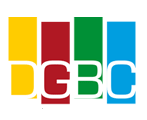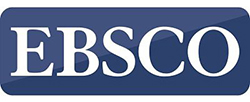El papel de las aplicaciones web en el desarrollo de la competencia multilingüe en los cursos AICLE de la enseñanza superior
DOI:
https://doi.org/10.46502/issn.1856-7576/2024.18.03.9Palabras clave:
aprendizaje digital, competencia lingüística, aprendizaje integrado de contenidos y lenguas, tecnologías pedagógicas.Resumen
El objetivo del trabajo es determinar el papel de las tecnologías web para garantizar la formación de la competencia multilingüe dentro del enfoque AICLE. Para ello, se realizó una encuesta entre estudiantes de diversas especialidades, aunque con especial énfasis en los estudiantes de universidades técnicas. La encuesta se realizó entre 58 estudiantes. Se utilizaron cuestionarios que incluían preguntas sobre el uso de aplicaciones web en diversas formas de enseñanza. Los resultados de la encuesta mostraron la gran eficacia del uso de aplicaciones web en los cursos AICLE para la formación tanto de la competencia lingüística como del conocimiento de las materias. El método AICLE combinado con modernas aplicaciones web demostró ser una herramienta eficaz en el proceso de aprendizaje de los alumnos. La aplicación del programa de este enfoque permite no sólo resolver el problema de la sobrecarga educativa, sino también reforzar el desarrollo general de los alumnos, incluidas sus competencias lingüísticas. En las conclusiones, se señala que para el éxito de la aplicación del programa AICLE, es necesario proporcionar a los estudiantes con términos esenciales y adquirir una lengua extranjera y la disponibilidad de personal docente capacitado.
Citas
Burns, L. V. F., & García, M. R. (2024). Preservice teachers' social projects for digitalized bilingual classrooms. In Interdisciplinary Research and Innovation in Bilingual and Second Language Teacher Education (pp. 90-119). Routledge. https://doi.org/10.4324/9781003350217-8
Byrko, N., Tolchieva, H., Babiak, O., Zamsha, A., Fedorenko, O., & Adamiuk, N. (2022). Training of teachers for the implementation of universal design in educational activities. AD ALTA: Journal of Interdisciplinary Research, Special Issue 12, 117-125. https://www.magnanimitas.cz/ADALTA/120228/papers/A_22.pdf
Cinganotto, L. (2016). CLIL in Italy: a general overview. Latin American Journal of Content & Language Integrated Learning, 9(2), 374-400. https://doi.org/10.5294/laclil.2016.9.2.6
Compagnoni, I. (2023). The impact of a post-pandemic educational technology training on usability and acceptance by teachers of italian as a foreign language. Italiano LinguaDue, 14(2). https://doi.org/10.54103/2037-3597/19623
Denman, J., Schooten, E. V., & de Graaff, R. (2022). Inclusive CLIL. AILA Review, 35(2), 321-350. https://doi.org/10.1075/aila.22020.den
Frumkina, A., Diachenko, M., Polyezhayev, Y., Savina, N., & Hadi, F. (2020). Readiness of future teachers for integrated teaching of educational subjects in foreign language. Práxis Educacional, 16(38), 502-514. https://doi.org/10.22481/praxisedu.v16i38.6023
Geoghegan, L. (2024). Language learning motivation in multilingual CLIL. Porta Linguarum Revista Interuniversitaria de Didáctica de las Lenguas Extranjeras, (41), 137-151. https://doi.org/10.30827/portalin.vi41.26620
Gierlinger, E. M. (2017). Teaching CLIL? Journal of Immersion and Content-Based Language Education, 5(2), 187-213. https://doi.org/10.1075/jicb.5.2.02gie
Hemmi, C., & Banegas, D. L. (2021). CLIL: An Overview. In International Perspectives on CLIL (pp. 1–20). Springer International Publishing. https://doi.org/10.1007/978-3-030-70095-9_1
Hubina, S. (2017). Teaching activities self regulation by means of art therapy. Science and Education, 11, 114-119. http://scienceandeducation.pdpu.edu.ua/uk/articles/2017-11-doc/2017-11-st15
Iastremska, O., Tryfonova, O., Mantaliuk, O., & Baranets, H. (2023). The impact of strategic decisions on the future development of organisations and economic dynamics. Futurity Economics&Law, 3(4), 117-134. https://doi.org/10.57125/FEL.2023.12.25.08
Jiang, L., Li, Z., & Leung, J. S. C. (2024). Digital multimodal composing as translanguaging assessment in CLIL classrooms. Learning and Instruction, 92, 101900. https://doi.org/10.1016/j.learninstruc.2024.101900
Khoiriyah, K. (2021). Content and Language Integrated Learning (CLIL) in Indonesian Context: an Overview. Journal of Progressive Education, 11(3), 587-601. https://doi.org/10.23960/jpp.v11.i3.202110
Martínez Agudo, J. de. D. (2019). The impact of CLIL on English language competence in a monolingual context: a longitudinal perspective. The Language Learning Journal, 48(1), 36-47. https://doi.org/10.1080/09571736.2019.1610030
Nawrot-Lis, B. (2021). Language in CLIL settings: research overview. Linguistics, 1(14), 223-235. https://doi.org/10.25312/2391-5137.14/2020_14bnl
Papaja, K. (2024). Preliminary Material. In A Reflective CLIL Teacher: A Way to Enrich the CLIL Teaching Professional Practice in the Polish Context. BRILL. https://doi.org/10.1163/9789004548152_001
Patiño-Santos, A., & Poveda, D. (2022). Bilingual education. In Global CLIL (pp. 149-173). Routledge. https://doi.org/10.4324/9781003147374-9
Paulsrud, B. (2018). Mapping CLIL in Sweden. In L. K. Sylvén (Ed.), Investigating Content and Language Integrated Learning (pp. 19-34). Multilingual Matters. https://doi.org/10.21832/9781788922425-005
Pérez Cañado, M. L. (2018). CLIL and Educational Level: A Longitudinal Study on the Impact of CLIL on Language Outcomes. Porta Linguarum Revista Interuniversitaria de Didáctica de las Lenguas Extranjeras, 29, 51-70. https://doi.org/10.30827/digibug.54022
Phuong, Y. H., & Thi Nguyen, L. G. (2022). English Teachers’ Questions in A Vietnamese High School Reading Classroom. JEELS (Journal of English Education and Linguistics Studies), 4(2), 129-154. https://doi.org/10.30762/jeels.v4i2.63
Popadynets, O., & Staryk, O. (2022). From English for specific purposes (ESP) to content and-language integrated learning (CLIL): to the problem of providing continuous foreign language education. Humanities science current issues, 3(47), 301-305. https://doi.org/10.24919/2308-4863/47-3-49
Rudenko, O., & Kharkov, S. (2023). Philosophical studies of the future in the context of postmodern knowledge: theory, methodology. Futurity Philosophy, 2(3), 4-16. https://doi.org/10.57125/FP.2023.09.30.01
San Isidro, X., & Lasagabaster, D. (2020). Students’ and families’ attitudes and motivations to language learning and CLIL: a longitudinal study. The Language Learning Journal, 50(1), 119-134. https://doi.org/10.1080/09571736.2020.1724185
Shevchenko, Y., & Dubiaha, S. (2022). The impact of inclusive practices on academic performance in primary school. AD ALTA: Journal of Interdisciplinary Research, 12(2), 124-127. http://eprints.mdpu.org.ua/id/eprint/12714/1/124-127.pdf
Smala, S. (2022). Situated emergence of CLIL. In Global CLIL (pp. 52–73). Routledge. https://doi.org/10.4324/9781003147374-4
Snizhko, N. (2023) Implementation of bilingual education in Ukrainian institutions of higher education. Viae Educationis: Studies of Education and Didactics, 2(3), 35-39. https://cejsh.icm.edu.pl/cejsh/element/bwmeta1.element.ojs-doi-10_15804_ve_2023_03_04
Stepanenko, O., Ohrimenko, Z., Shaforost, Y., Pasichnyk, L., & Pochynok, Y. (2022). Positive learning environment in educational sphere. Revista Eduweb, 16(2), 30-48. https://doi.org/10.46502/issn.1856-7576/2022.16.02.2
Turchyn, I., Zaitseva, S., Rudenko, N., Saienko, V., Kuzemko, N., & Denefil, O. (2023). Using distance learning models as opportunities for blended learning for foreigners. Romanian Magazine for Multidimensional Education, 15(4), 178-191. https://www.doi.org/10.18662/rrem/15.4/787
Verikaitė-Gaigalienė, D., & Andziulienė, L. (2019). To Be Or Not to Be: An Overview of Clil Implementation in Lithuania. Sustainable Multilingualism, 14(1), 123-135. https://doi.org/10.2478/sm-2019-0006
Yevtushenko, N. (2021). Content-language integrated learning (clil) in the training of students of technical specialties. Young Scientist, 10.1(98.1), 45-48. https://doi.org/10.32839/2304-5809/2021-98.1-11
Zaitsev, S. (2023). Using Digital Tools to Increase the Competitiveness of Small Businesses (Experience of Full-Service Bakeries). Futurity of Social Sciences, 1(4), 75-90. https://doi.org/10.57125/FS.2023.12.20.05
Descargas
Publicado
Cómo citar
Número
Sección
Licencia
Derechos de autor 2024 Yuriy Polyezhayev, Liubov Terletska, Alla Kulichenko, Lolita Vorobiova, Nataliia Snizhko

Esta obra está bajo una licencia internacional Creative Commons Atribución 4.0.















